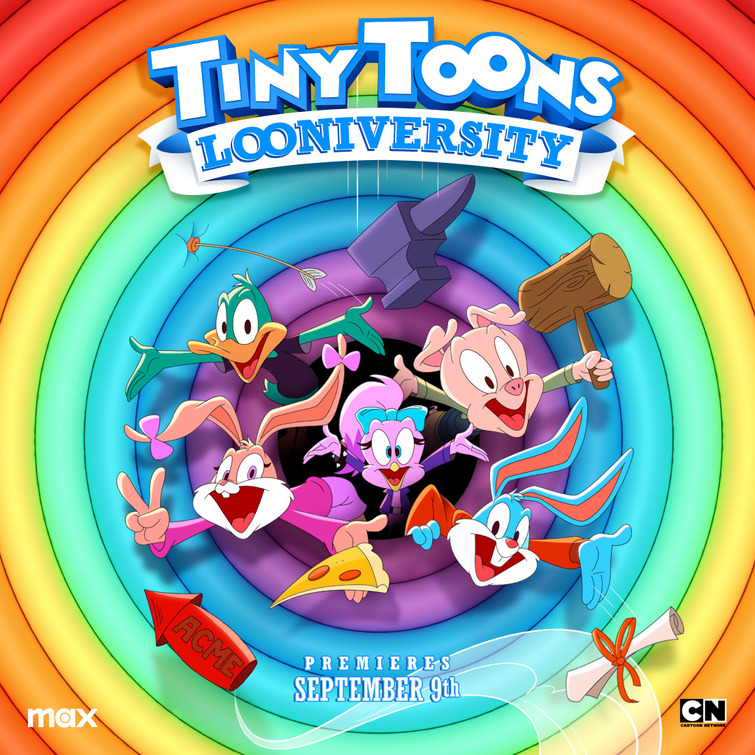
The story of a wealthy family that lost everything, and the one son who had no choice but to keep them all together.
All Episodes
You May Also Like

Follow Babs and Buster Bunny, Sweetie Bird, Hamton J. Pig, and Plucky Duck as they learn what it takes to be a professional toon.

Three women living in three different decades: a housewife in the ’60s, a socialite in the ’80s and a lawyer in 2018, deal with infidelity in their marriages.

A newly blended family and two polar opposite stepsiblings named Erin and Aaron who come together through music.

Scooby-Doo! Mystery Incorporated is the eleventh incarnation of Hanna-Barbera’s Scooby-Doo animated series, and the first incarnation not to be first-run on Saturday mornings. The series is produced by Warner Bros. Animation and Cartoon Network and premiered in the United States on Cartoon Network on April 5, 2010, with the next twelve episodes continuing, and the first episode re-airing, on July 12, 2010. The series concluded on April 5, 2013 with two seasons and fifty-two episodes, with a total of twenty-six episodes per season.
Mystery Incorporated returns to the early days of Scooby and the gang, when they are still solving mysteries in their home town, though it makes many references to previous incarnations of the franchise, not least among them many cases and creatures from the original Scooby-Doo, Where Are You!. Episode by episode, the series takes a tongue-in-cheek approach to the classic Scooby-Doo formula, with increasingly outlandish technology, skills and scenarios making up each villain’s story, and a different spin on the famous “meddling kids” quote at the end of every episode. Contrasting sharply with this, however, are two elements that have never been used in a Scooby-Doo series before: a serial format with an ongoing story arc featuring many dark plot elements that are treated with near-total seriousness, and ongoing relationship drama between the characters.

13 years after being impregnated by Satan, a reluctant mother, Laura, and her Antichrist daughter, Chrissy, attempt to live an ordinary life in Delaware, but are constantly thwarted by monstrous forces, including Satan, who yearns for custody of his daughter’s soul.

As a psychic, Maggie regularly sees the future of her friends, parents, clients and random strangers on the street, but when she suddenly sees a glimpse of her own future, she is forced to start living in her own present.

A woman overcomes childhood leukemia to achieve her dream of becoming an on-air host at a home shopping network.

Thanks to his police officer father’s efforts, Shawn Spencer spent his childhood developing a keen eye for detail (and a lasting dislike of his dad). Years later, Shawn’s frequent tips to the police lead to him being falsely accused of a crime he solved. Now, Shawn has no choice but to use his abilities to perpetuate his cover story: psychic crime-solving powers, all the while dragging his best friend, his dad, and the police along for the ride.

Bonded by insomnia, best friends Lisa and Danny stay connected to each other late into the night and find their way through a world of wonderfully weird surprises as their relationship deepens.

Wakana Gojo is a high school boy who wants to become a kashirashi–a master craftsman who makes traditional Japanese Hina dolls. Though he’s gung-ho about the craft, he knows nothing about the latest trends, and has a hard time fitting in with his class. The popular kids–especially one girl, Marin Kitagawa–seem like they live in a completely different world. That all changes one day, when she shares an unexpected secret with him, and their completely different worlds collide.

One Day at a Time is an American situation comedy that aired on the CBS network from December 16, 1975, until May 28, 1984. It starred Bonnie Franklin as Ann Romano, a divorced mother who moves to Indianapolis with her two teenage daughters Julie and Barbara Cooper with Dwayne Schneider as their building superintendent.
The show was created by Whitney Blake and Allan Manings, a husband-and-wife writing duo who were both actors in the 1950s and 1960s. The show was based on Whitney Blake’s own life as a single mother, raising her child, future actress Meredith Baxter. The show was developed by Norman Lear and was produced by T.A.T. Communications Company, Allwhit, Inc., and later Embassy Television.
Like many shows developed by Lear, One Day at a Time was more of a comedy-drama, using its half-hour to tackle serious issues in life and relationships, particularly those related to second wave feminism. The earlier seasons in particular featured several multi-part episodes, serious topics, and dramatic moments. As in other Lear shows of the era, the show was shot on videotape in front of a live audience, giving it a sense of immediacy, and close-ups were often employed during dramatic scenes. As the social climate changed in the 1980s, the show’s writing became less edgy, and as the girls became adults, the innovation of the original premise — a divorced mother raising teenage children — was lost. The show’s nine years give it the second-longest tenure of any Lear-developed sitcom under its original name, after The Jeffersons.

Three incoming freshmen attending Midwestern college football powerhouse Blue Mountain State must quickly adapt to college life and juggle football, girls, classes and nonstop hazing.